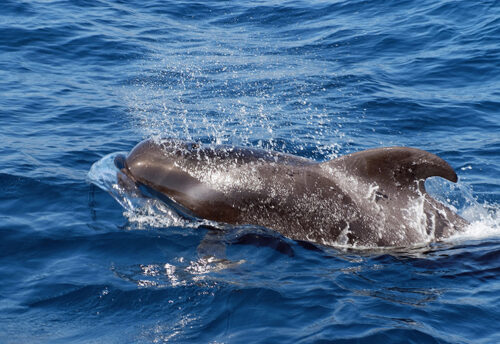
The roundworm is the most common parasitic worm in humans. Even more so than the dreaded tapeworm. They are found in sub-tropical and tropical countries, the world over. These worms are found among soil, feces (poop), and on contaminated food. Once ingested, they get to work quickly to wreak havoc among their host causing a range of ill will. Squirming yet? You will be. Read on…
First the Stats…
Scientific name: Ascaris lumbricoides
Length: Up to 12 inches
Lifespan: Up to 2 years
Now on to the Facts!
1.) Not only are these worms long, but they can be as thick as a pencil.
2.) Infections have no symptoms in more than 85% of cases, primarily if the number of worms is at a minimum.
3.) Symptoms increase with the amount of worms present and may include fever and shortness of breath at the start of the disease. These symptoms can be followed by abdominal swelling, abdominal pain, and diarrhea. Children are most commonly afflicted, and within children the infection can also cause low weight gain, malnutrition, and even learning disabilities.
4.) Severe infection symptoms typically include bloody sputum (phlegm), cough, fever, abdominal discomfort, intestinal ulcer(s), as well as a less commonly missed passing of the very long worms. Again, up to 12 and even sometimes 13 inches long!
5.) Fertilized eggs embryonate (develop into an embryo) and become infectious after 18 days to several weeks in soil, depending on the environmental conditions. The infection happens when a human swallows water or food contaminated with embryonated eggs.
But wait, there’s more on the roundworm!
6.) The larvae then penetrate the mucosa and submucosa, entering the venules or lymphatic vessels. From there, the larvae pass through the heart to enter the pulmonary circulation. Then the larvae break through the walls of the pulmonary capillaries and enter the alveoli.
7.) The juvenile worms then migrate from the alveoli, through the bronchioles and bronchi, and into the trachea. An acute inflammatory reaction (inflammation, aka swelling) can occur if some of the worms get lost during this migration process and accumulate in other organs of the body.
Did you know…?
Fertilized eggs become infectious after up to 2 weeks in the soil and can remain viable for up to 10+ years!
8.) Once they enter the trachea, the worms are coughed up into the pharynx and then usually swallowed again, after which they pass through the stomach and into the small intestine, where they mature into adult worms.
9.) Adult worms start producing fertilized eggs within 60 – 65 days of being swallowed. Females can produce as many as 200,000 eggs per day for up to 18 months!
10.) The eggs have a lipid layer which gives them a resistance to the effects of acids and alkalis, as well as other chemicals.
But wait, there’s still more on the roundworm!
11.) There are an estimated 807 million – 1.2 billion people infected with roundworms, with the primary concentration being in Asian and African countries.
12.) Even though they are rare in the United States, ascariasis is still endemic in the southeastern United States due to the warmer temperature and humid climate.
13.) The eggs are highly resistant to strong chemicals, desiccation (drying out), and low temperatures.
14.) Treatment of roundworms, once a human is infected, consists of up to a 3+ day deworming medication taken orally. Then the dreaded passing of the dead worms via the stool (poop).
Now a Short Roundworm Video!
Be sure to share & comment below! Also, check out the Critter Science YouTube channel. Videos added regularly!
Want to suggest a critter for me to write about? Let me know here.
Some source material acquired from: Wikipedia




